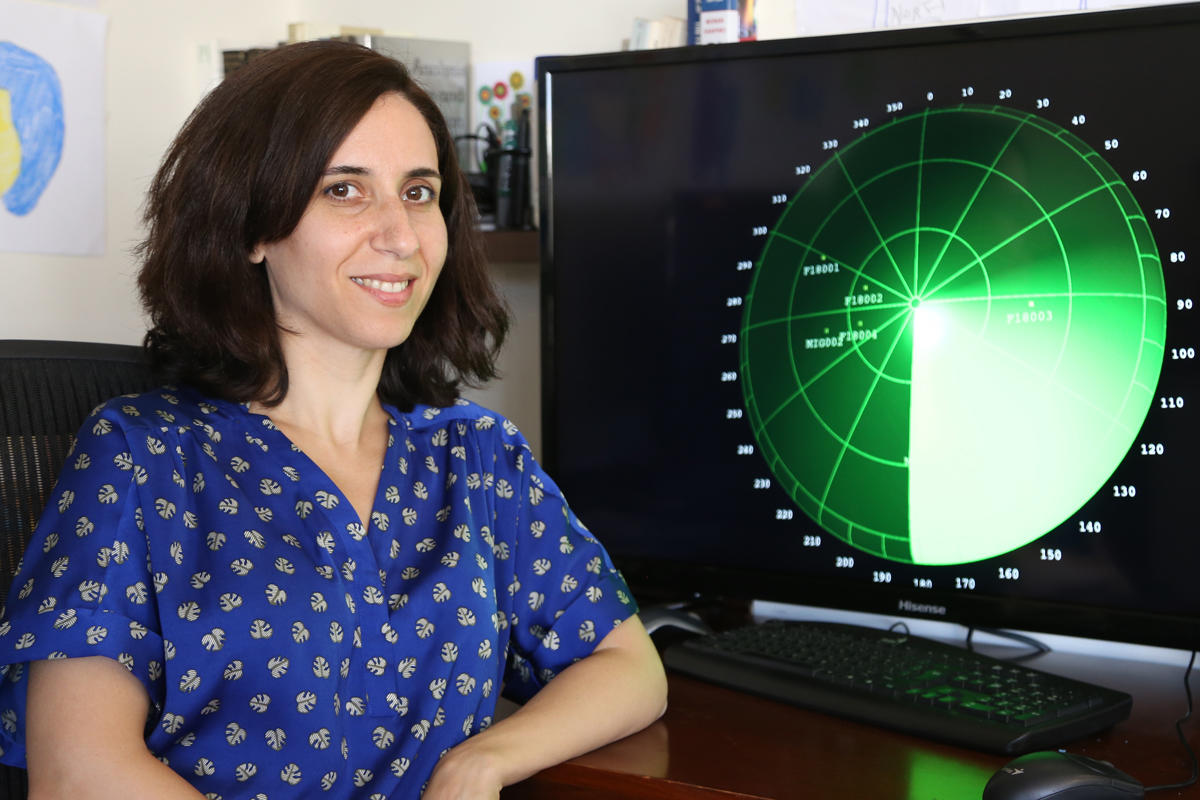Research Highlight: Mathematics with Impact
Dr. Leila Issa’s research goes to show how mathematical modeling can improve our lives.
Numerous applications for mathematical equations have had a positive impact far beyond the halls of academia.
Now, Assistant Professor of Applied Mathematics Dr. Leila Issa has developed efficient models to simulate and optimize fluid flows on the micro and macro scales. These models give us the power to analyze and understand phenomena that impact us everyday; from the flow of air in the airways of a tiny neonate to the mesoscale currents in the ocean and their role in transporting pollutants.
In a recent research paper “A Simplified Model for Unsteady Pressure Driven Flows in Circular Microchannels of Variable Cross-Section” published in the high-impact journal Applied Mathematical Modelling (Elsevier), Issa developed an accurate and fast model that simulates the fluid flow in long and variable microchannels.
Issa’s model can be used, for instance, in helping doctors understand the airflow of premature babies’ airways, allowing them to devise better artificial respiratory support for the tiny patients. It can also be applied in the operation of an emerging technology known as lab-on-the-chip systems, described by Issa as “devices made of several connected microchannels, which transport small volumes of fluid, in order to implement a lab operation or function.”
Optimizing the design of these devices entails simulation and re-simulation of the full system, which is both time-consuming and costly due to its complexity and the many branching channels.
“For scientists to optimize their design, it is necessary to have an efficient and precise model of the fluid transport in these channels,” Issa said. “My work in this area is to come up with fast and accurate models for this purpose.” Notably, her model is 500 times faster than doing a full simulation.
Issa holds a PhD in Computational and Applied Mathematics from Rice University in Texas. Following her return from the United States, she was driven by a passion to find impactful solutions to problems in Lebanon. She also likes her projects to be scientifically challenging.
She partnered with France-based L’OCEAN Lab and the National Council for Scientific Research (CNRS) to model surface currents between Lebanon and Cyprus using smart floaters that communicate their location via satellite at different time intervals.
The objective, Issa said “was to take collected data, and to come up with an accurate model to reconstruct these surface currents, which has applications that include tracking pollutants accidentally released near the coast or in the open sea. Marine litter in our part of the Mediterranean is a great concern, especially with the repeated garbage crises in Lebanon.”
The project resulted in an article titled “Modelling Surface Currents in the Eastern Levantine Mediterranean Using Surface Drifters and Satellite Altimetry” published in another high-impact journal, Ocean Modelling, and featured in QS WOW news, in February 2018.
Most recently, Issa collaborated with the American University of Beirut and the King Abdullah University of Science and Technology (KAUST), Saudi Arabia, on a project to track pollutants in the Red Sea. The resulting paper, “Lagrangian Tracking in Stochastic Fields with Application to an Ensemble of Velocity Fields in the Red Sea,” was also published in Ocean Modelling last month.
In the context of the newly established master’s degree in Applied and Computational Mathematics, Issa teaches partial differential equations, which can be applied in the design of an airplane, the prediction of fluids flows, oil exploration and ultrasounds, to name a few.
“There is not an area of technology or science that does not use math,” she said, “or to quote the theoretical physicist Richard Feynman ‘People who wish to analyze nature without using mathematics must settle for a reduced understanding.’”
